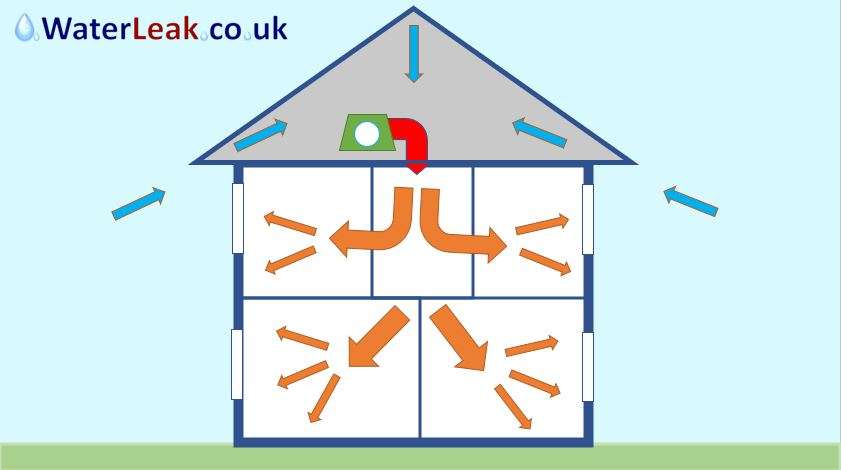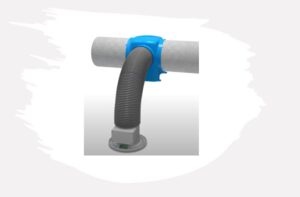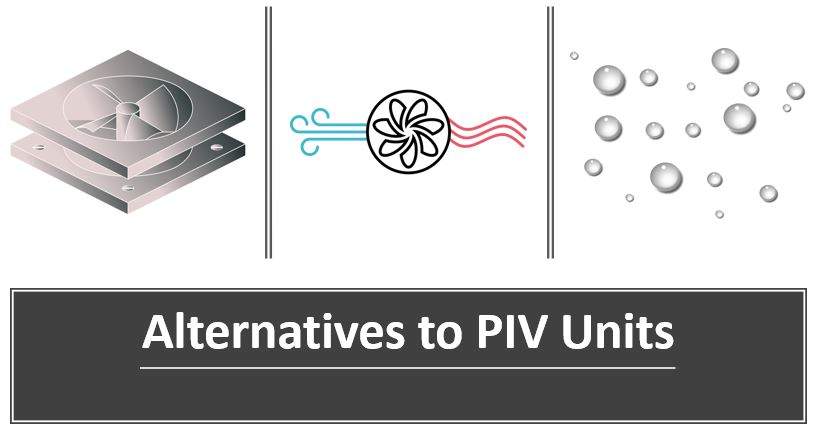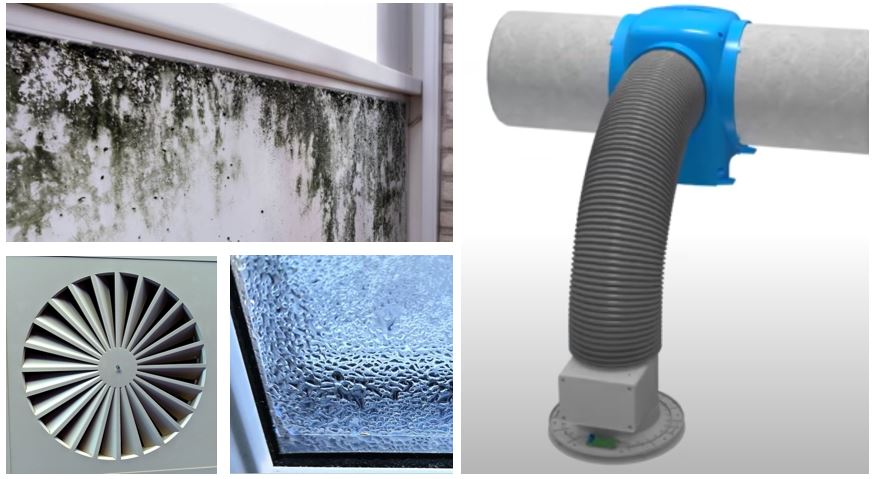What is a PIV Unit?
A PIV Unit refers to a ‘Positive Input Ventilation’ Unit, which are designed to improve ventilation and air quality (directly and indirectly) and especially humidity in houses. They blow fresh, filtered air into a property normally via the air in your loft space, which most commonly is vented to the outside air.
This is where the word positive comes in because normal ‘extractor’ fans (like kitchen extractor fans or bathroom fans) remove air from a room using negative pressure (aka suction), whereas PIVs blow positive pressure into a room. However, they may not be needed in all specific situations, which we will explain later.
PIV Units are commonly installed in the loft of a property and tend to be either stood on the ceiling joists or are suspended from the roof rafters, within that space. The solution they provide isn’t necessarily advanced but they can be a very effective solution in the right application. On the subject of roofs, see our guide to roof leaks.
This increases the pressure in the property which, in turn, encourages the ‘stale’ air out of your home through whatever air gaps or vents you have in your home. This process can certainly have benefits in a number of areas, although there are potential downsides, which we will explain.

Benefits of PIV Unit?
Here are some of the things that PIV units may help with:
- They can help to greatly reduce condensation problem in UK properties
- This can help with challenges from cold spot issues
- In turn they can also help prevent mould growth problem on surfaces
- And also, possible damp problems from excessive condensation too
- They can help to control or reduce humidity in the air of UK homes
- They can help to improve air quality via their onboard filter systems
- Linked to these, they can help remove stale air smells in properties
- Certain models are smart, reacting to ambient air needs automatically
Some commonly seen PIV units seen in the UK include Vent-Axia PIV Units and Nuaire PIV units, both of which have a range of various different products available. It is worth checking out PIV unit reviews to compare models and brands. On the subject of condensation and PIV units, we discuss them on our article about dew point charts, which is a very useful resource too.
Cost of a PIV Unit – is it worth it?
Obviously the cost of PIVs, like many things, can vary according to the model and who you buy it from. However, a fairly standard PIV unit itself will generally cost in the £300 to £600 price range. Likewise, installation costs may vary but expect to pay a similar amount for installation too. Again this will depend on a number of things including the fitting company, location and type of house etc. For example, it’s possible that fitting a PIV into a newer house will be simpler (and therefore cheaper) than an older house, even of the same size. In most instances, one PIV unit will be sufficient.
Of course, apart from fitting cost, there is running cost to consider which we will look at next.

How much does a PIV Unit cost to run?
There are a few things that will affect the cost to run a PIV Unit (not least the weather / temperature – especially on heated versions) but perhaps the biggest will be whether or not you choose a PIV unit with heater or non-heated unit. As you might expect a heated unit will cost more.
As a very rough guide (as there are many other factors to consider) expect a non-heated unit to cost a few pence per day to run as they may be in the 5-10w of power, whereas some heated units may run at 300w-500w to run at full power, costing much more, especially in winter.
We suggest looking into to understand your cost of electricity per KWh and perhaps use an online electricity cost calculator to help you do your calculations, tailored to your tariff.
So all in, the cost of a PIV unit to install and run is not necessarily cheap, however, the benefits can be significant. This is especially the case if you have a condensation or mould problem in your home. That said, there can be alternative solutions which may help to reduce this.

Alternatives to PIV Unit
We offer a range of services to help with mould (including black mould problems), damp and condensation problems in your property – in particular we offer damp, mould and condensation surveys in which we look at detailed factors related to your home, including the structure, ventilation and air quality etc. This may often indicate that a solution other than a P I V unit is preferential.
We look at this more in our useful article about desiccant dehumidifiers. Similarly in our handy tool which has a Bathroom Extractor Fan Calculator.
We collate all this information to produce a report for you which is tailored to your indidual home and the conditions within it. We will help to identify the cause of mould, damp and condensation in your home and make recommendations as to how to prevent them.
On many occasions the solution may be a simple one and so you may not need the expense of a PIV unit. They are good, and they do have their place but they are not always needed.
We also offer mould removal services and property drying, if they are required.
Does PIV Unit make houses cold?
This is a common question when it comes to PIVs and, as we said earlier this will depend on whether you go for a heated or non heated unit. Remember that many heated units will have a thermostat on them so will, in that case, not be heating all the time. This is clearly especially the case in summer where the ambient air is warm. A heated devices helps stop the PIV unit making the house cold.
So yes, in some instances this can have an impact but the same can be said to open your windows in winter to refresh the air, or having trickle vents etc. It is a case of weighing up the pros and cons.
On the subject of ventilation and fans, see our article about fans cooling you in hot weather. You may also like some of these associated guides:
- Dew Point Calculator
- Humidity In House UK
- Damp Patch On Ceiling
- Shower Leaking Through Ceiling
- Water Testing Kit

How long does a PIV unit take to work?

Once you have installed a PIV unit and it is running, you should start to see the benefits of it working very quickly, even within a matter of hours or days. It will help to replace the more humid / moist air with fresher (lower humidity) air in your property and help to therefore reduce the risk of condensation and mould forming, especially on cold surfaces.
Are PIV units noisy?

No, PIV units are normally not noisy. In fact you will struggle to hear them at all. PIV units are whisper quiet whilst being effective at the same time. Despite that, they can still be effective at helping to improve air quality, reduce condensation and help prevent mould which are all very desirable, especially in winter months. This can be in the whole of the house.
Will a PIV unit help stop damp?

Whether or not a PIV unit will help stop damp will depend on what is the cause of the damp. If you have a structural issue causing damp or damp caused by a water leak then it will not stop that, the best you might expect is that it makes it ‘less worse’. However, if you have damp caused by condensation problems then a PIV unit is very likely to be much more beneficial.
Is a PIV unit necessary?

A PIV unit is not always necessary to solve issues with damp and condensation in your home, there are other possible solutions to such issues without the need for a professional installation. They can be beneficial but, in many situations, simpler and more cost-effective solutions are available. The best solution will likely depend on the cause of the issue, the location of the problem and the age and condition of the property you are looking to sort.
